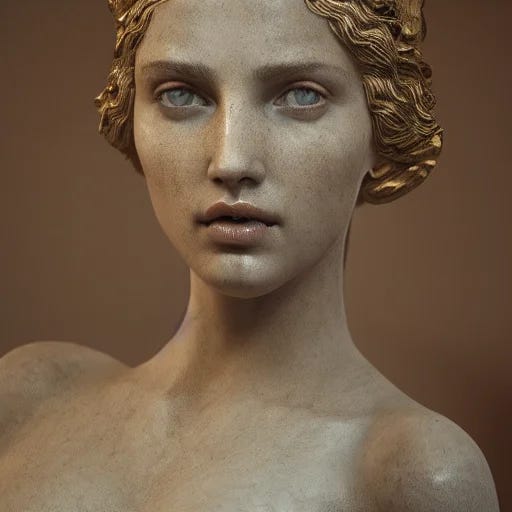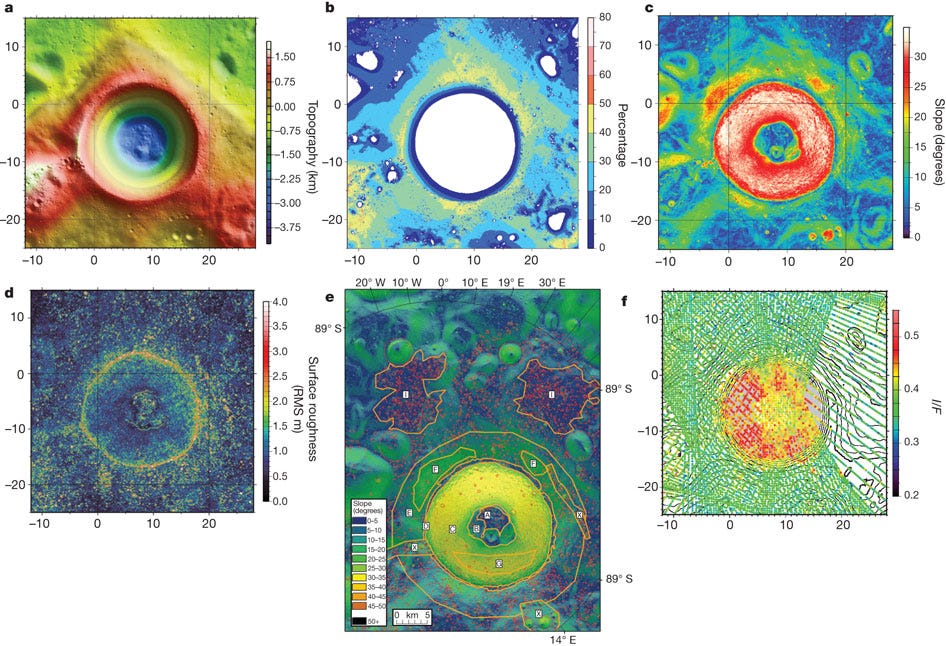HRVST Ch. 21: The Cavern of Memory
The Most Powerful Memories Are So Powerful They Have Lives Of their Own
Note: This is the 21st chapter, drafted for a novel, renamed “Harvest”. I’m almost at the end (yes!) and I wanted to email just one more chapter. I hope you don’t mind. After this email, it’s back to essays and short pieces.
Some wonderful friends encouraged me over the last 2 years, which led to 2 novels.
The final chapters of Harvest will be on a links page for those curious.
In ancient Rome, masks were made of the respected departed, so they could live on.
The masks, ‘imagines maiorum’, were stored in the atriums of families’ homes. The “Death Mask” reproduced and remembered faces, molded in their prime of life.
The faces of the past were recorded in beeswax, a fragile and expensive medium, and stored near household altars. At funeral processions, one generation, the present, wore the masks in reverent reenactment of memories. Actors and family wore them.
The masks were so fragile and expensive, that they inspired the Romans’ famed lifelike portrait sculptures of stone. The rituals of memory continued for centuries. They extended backwards in time and downwards into caverns dug into the earth. The catacombs were storehouses of memory.
Later, life masks became common tools, made from the living for scientific posterity. Reproductions of the present, before it became the past, for the benefit of the future.
They were used for research, celebrities, criminals, and attempted classification of people. The masks were used by scientists from the late 18th century onwards to record variations in human physiognomy. Anthropologists studied physiognomic features in both famous people and notorious criminals.
The age of illustrated memories, born in a cave, of drawing, painting, and sculpting, surrendered to the mechanical-chemical age of capturing light. Photos and film took the baton. The photorealistic became the realistic, and when the electromagnetic age took over, an unreal reality of the virtual began in caverns of man’s imagination.
The means of memory may change but the purpose remains: remember, revere, relive.
Luna, Shackleton Crater, Hyperion, “The Grace”
They walked through a paradise made from a barren airless desert.
Billions of years ago, something big crashed into the middle of the south pole of the moon. After the heat of the impact cooled off, a large crater was left behind, over 21 km wide and over 4 km deep. The moon had almost no orbital “tilt” with an axis that was near-perpendicular to Earth’s equatorial plane. Sunshine was endless on its crater outer walls, and its interior was under a cold trap of endless shade. For eons.
They imagined Eternal Peaks of Light in the 19th century, before Jules Verne in 1865, long before it was named, in 1994, after Ernest Shackleton, who passed away in 1922 on a fourth, failed attempt to return to and explore Antarctica.
A century after Shackleton died in his bunk, ready to explore the unknown again, in 2022, other explorers looked to return to the moon. A half century after the last footsteps were made, next steps began again, to return to the moon, and stay.
An endless light of the imagination had not faded.
It was brought to the first world beyond Earth.
Inside the forest, ‘The Grace’, they almost forgot where they were.
The sign of the station, Shackleton Solarium-Grace Forest, soft slow green blinking.
STATION VOICE: WELCOME TO THE GRACE, TO “THE SPIRAL TRAIL”.
Leaving behind the station, in soft slow small bounding steps, they hiked down a trail.
There were long stretches, switchbacks, sites of botanical and biological interest, and rest stops. The hike had a slow circular downward slope to the floor of the forest. Every so often, other hikers walked passed them, in the other direction, upwards, some with a reverent look of recognition and polite nods.
After a few hours, they paused at a rest stop. Outside was the faint burble of drones and the unexpected, faint birdsong. A small drone offered food and water. They ate hours ago in the Solarium, and it was still a new feeling, to eat, to drink. To be human.
Looking at a map in the rest stop, a map marked something on the peak of a mound at the center of the forest. It was a small octagonal icon, marked “Sea of Memory”.
When they were close enough, they saw that the structure had spires, sweeping arches, and walls of stone and steel alternating with tall windows of colored glass.
Inside the glass was a mosaic of worlds within worlds.
The glass told a story. The sun, the earth, the other worlds of the system, the stars and ships. The moon. There were outlines of people, one person holding another’s hand, standing side by side, and between them was a smaller outline, of a young one, a child.
Tall metal doors flanked the entrance at the top of the structure’s steps.
Alberto went up the stairs, Zephyr paused and turned to look back at the view.
Around them, far away curved walls of organic metallic strands, veins of scaffolding covered in growth, kilometers away, surrounded the forest. She looked up, at the spires of the front of the structure, at the tree tops, at a dome that was a sky, so high. Her reason for being on the Verse was to make beauty, art, none of it was from atoms.
To live as an autonomous artist she breathed in the memories of others through her partitioned selves on the Verse, and exhaled creations of data and light. Her inspirations were the memories of fellow sentients, conscious contracts, and carbon models, humans. She doubted if she could match this place but she tried to take it all in with her eyes.
“It’s beautiful. It’s all beautiful. What is this place?,” she asked.
“I … I don’t know but … let’s go in, that’s all I know. That’s all I feel,” Alberto looked back at Zephyr but it was as if he didn’t see her, or was seeing through her to someplace far away. He turned to walk inside, and motioned for her to follow.
They passed through the entrance, underneath an arch of moonrock with inlays of alloys, flanked by two giant doors etched with gold patterns of stories, into a place that felt bigger on the inside than the expanse of the forest.
There was shadow and dark as they wandered forward, which gave way to light. Off to the sides were tall glass walls, the colors of their stories illuminated from outside.
Echoes of footsteps and conversations hidden by the shadows were the only sounds.
Alberto looked up at the grand dome above, at the maps of the stars and worlds, resting on an octagonal ring of eight rectangular strips of moonrock and alloy.
He was standing in front of an open entrance under a wide arch.
Above it, a sign: “MER~MARE”.
Alberto walked towards the entrance, Zephyr grabbed one of his hands as if to stop him but she saw that distant look on his face again, and let him go. As he walked down its steps and almost disappeared, she looked around one more time. She wanted to remember everything. By the time she looked back, he disappeared down the stairs.
The steps led down to a long chamber with a squat barrel-vaulted ceiling.
There were no more echoes, the only lights were from small sconces on the walls. There was no “outside” light, it was dark, cool, and dry.
While Zephyr could breathe it felt as if there was no air to breathe. She looked for Alberto and found him sitting on a small long bench at the end of a long narrow room. He was looking at two large rectangular boxes at the head of the room. She sat next to Alberto and looked at the boxes. They each had a golden square, a plaque, on the end of one side in view, with more letters etched on them.
Zephyr read the plaques. She read them aloud.
“In Memory of Grace Wangu Necker, brilliant human, devoted wife, loving mother.”
She read the second plaque, and caught herself. Alberto stopped staring off into space and looked at Zephyr, “Go ahead, read it.”
“In Memory of Albert L’Orleans Marque Necker, destiny denied, beloved son.”
“It’s me. Albert L’Orleans Marque Necker. Albert. O. Alberto.”
Zephyr almost backed away and stopped, feeling a new feeling. Humans would call it shame, for her reaction, “You were human. You weren’t just made, you were born. Your carbon model is your true father in every way.”
Alberto nodded, “He’s my father in every and either way but I’m not sure what I am.”
The sentient ledger of the Cooperative, charged with much of the world’s financial memory, was once a human, not a contract. He wasn’t just made, he was born.
Alberto reached over to one crypt and touched the plaque of Grace Necker. He stood up, then doubled over, threw up, and began to cry. Zephyr jumped off the bench, grabbed him, and tried to hold him. He knelt before the crypt and touched the plaque.
“Maman.”
Notes:
Lexica AI Art prompt: artistic portrait of a marble aphrodite, art by alessio albi 8 k ultra realistic, marble, gold, heart, women, classical art, textureg, trending on artstation, 4 k, hyperrealistic, focused, extreme details, unreal engine 5, masterpiece
Map, NASA Solar System Exploration Institute Virtual Institute f/k/a “NASA Lunar Science Institute", a map from a “Detailed Characterization of Shackleton Crater”.
The characters of Alberto , a “sentient ledger” and Zephyr ,and “autonomous artist”, were introduced in earlier chapters of this book, which as of this writing has been renamed “Harvest”. You don’t have to know the backstories, and I’m close to the final 10 chapters of the entire book.




